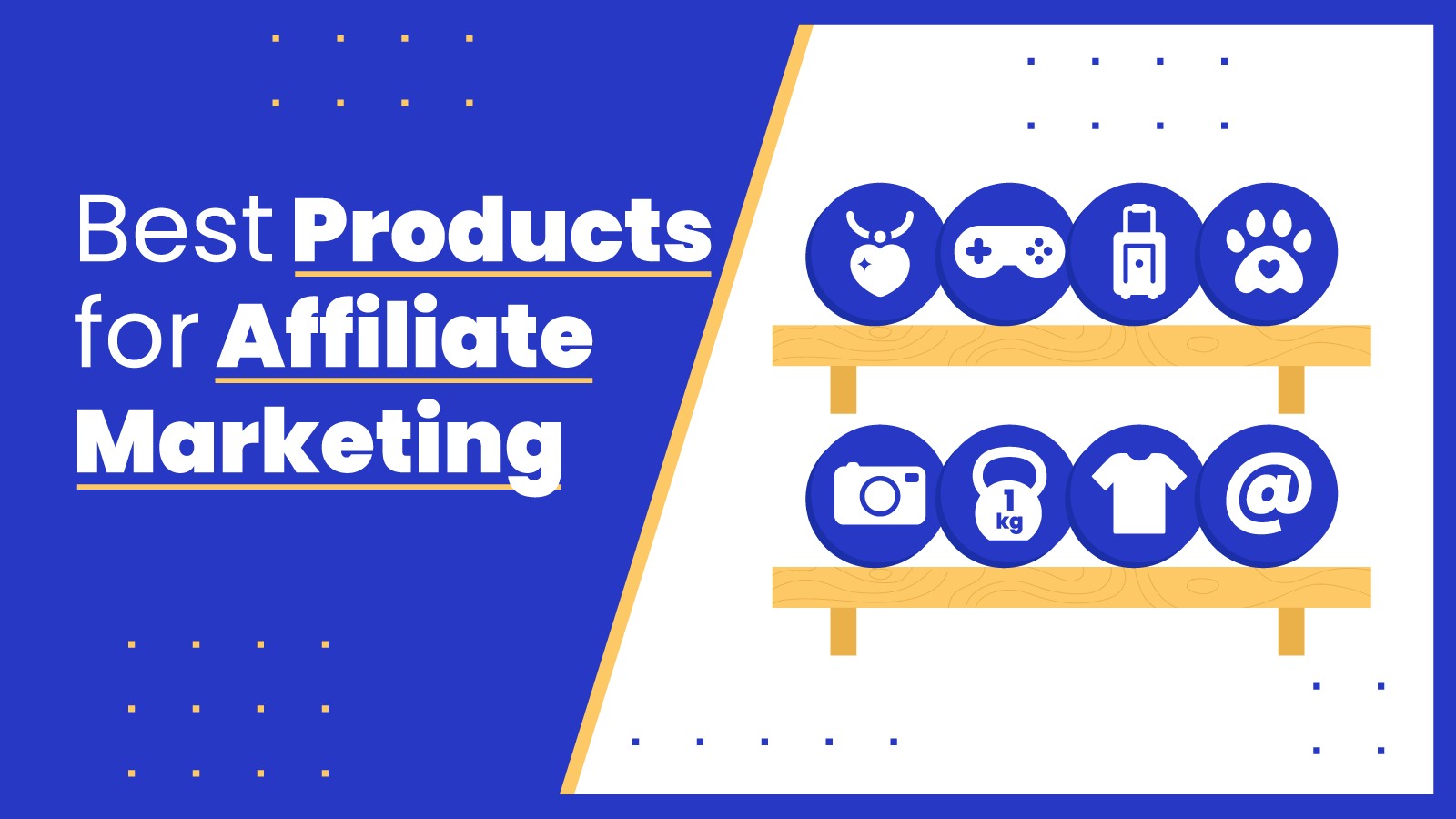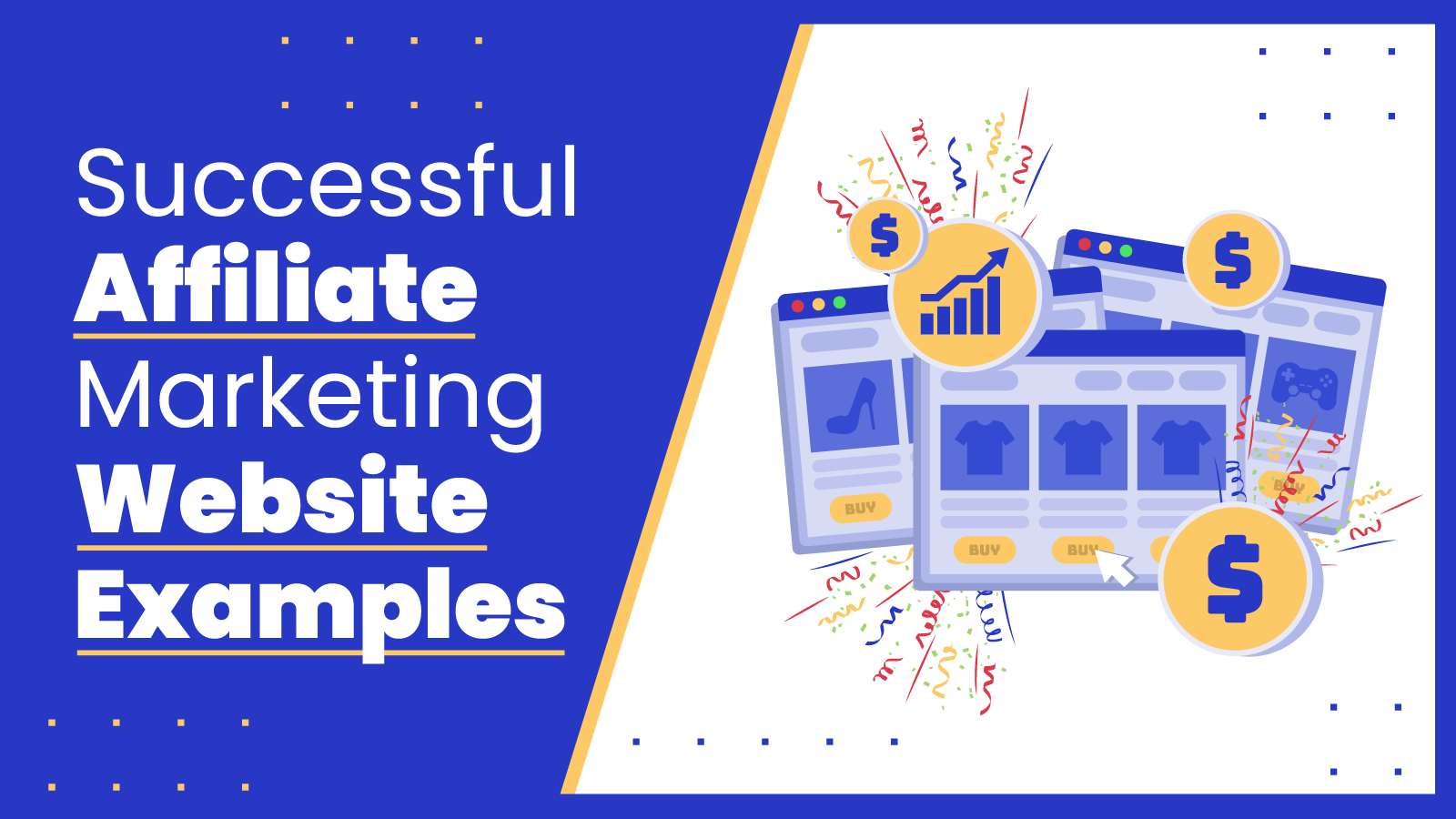If you read the posts in the average affiliate marketing Facebook group, you’re bound to see some people claiming that the industry is in a death spiral.
However, the results from our affiliate marketing survey show that this is a vocal minority. 83.1% of respondents say they’re optimistic about the future of the industry, and forecasters predict the global affiliate market size will grow by 63% in the next four years.
When you look at the raw data, it seems that the answer to “Is affiliate marketing dead?” is a resounding no.
However, the latest changes to the industry – including AI content and turbulent search algorithm updates – seem like the most disruptive yet.
It’s worth examining both sides of the argument to see if the naysayers are simply spouting their usual negativity – or if they’re on to something few others are seeing.
Why Do Some Think Affiliate Marketing Is Dead?
Let’s walk through the most common reasons people say the affiliate marketing industry is done for and see if their points have any merit.
Competition Is Always Growing
Affiliate marketing competition has never been higher. It’s been around since the early days of the Internet, and it’s now a well-understood method for making money online. It’s also easier than ever to get started thanks to wide-coverage programs like Amazon Affiliate and the availability of WordPress and other modern CMS’s to build websites.
These days, even huge brands and publications are involved in affiliate marketing. They tend to dominate high-value products and keywords, too. A good example of that is this article from BobVila.com that targets “home products” and tells you right up front they’re using affiliate links:

There is still opportunity in affiliate marketing, but you have to work harder and smarter than ever to be successful.
Rules and Regulations Are Becoming Tougher
Privacy laws and regulations all around the world are becoming tougher and more widespread. And, while they often share core principles, each new standard introduces new guidelines that websites need to account for.
For instance, a glance at the map of global privacy laws from DataGuidance shows that Europe (GDPR), the United States (CCPA and others), and Canada (PIPEDA) all have different privacy standards.
In the U.S. alone, the IAPP Privacy Legislation Tracker shows 16 states with privacy laws in place or active bills as of August 2023. More than a dozen other states have proposed bills that are currently inactive.
Brands like Amazon and eBay often have their own standards for affiliate disclosures, too. Add it all together, and keeping an affiliate website in compliance is a tedious undertaking.
Amazon Constantly Changes Their Commission Structure
Amazon is the most popular affiliate network, and the one that most people start with. Many affiliate marketers like it because it features products that fit just about every niche.
But Amazon is constantly changing its commission structure, and there’s been a clear downward trend in recent years. Creators are making less from Amazon over time, and as the commission rates fall, so does the profit margin for content production.
For instance, between 2019 and 2023, Amazon slashed the commission for many of the most popular product categories.
| Category | Old Rate | New Rate | % Change |
|---|---|---|---|
| Home | 8% | 3% | -62.5% |
| Home Improvement | 8% | 3% | -62.5% |
| Furniture | 8% | 3% | -62.5% |
| Pet Products | 8% | 3% | -62.5% |
| Lawn & Garden | 8% | 3% | -62.5% |
| Beauty | 6% | 3% | -50% |
| Headphones | 6% | 3% | -50% |
| Outdoors | 5.5% | 3% | -45% |
| Sports | 4.5% | 3% | -33% |
Brands Are More Selective than Ever
With increasing competition among creators, brands can be more selective when choosing their affiliates. Screening has become more stringent, and beginners often have trouble meeting the requirements.
That’s especially true if you’re applying to a top-earning affiliate marketing program. It’s not uncommon to be turned down on your first try. For example, here’s a rejection email I received from an affiliate program

SEO Changes Can Squash Profits
Constant Google algorithm updates can shake up the search engine results pages (SERPs) and can tank your organic traffic. As a site owner, that leaves you scrambling to maintain or regain rankings by updating your content.
On the flip side, great evergreen or targeted content may benefit from Google changes.
Either way, changes in traffic lead to changes in affiliate commissions. If your visitor count plummets, your affiliate revenue will too.
A painful example of the effects Google algorithm changes can have is GearHungry.com, who got hit hard with Core Updates in 2020 and 2021:
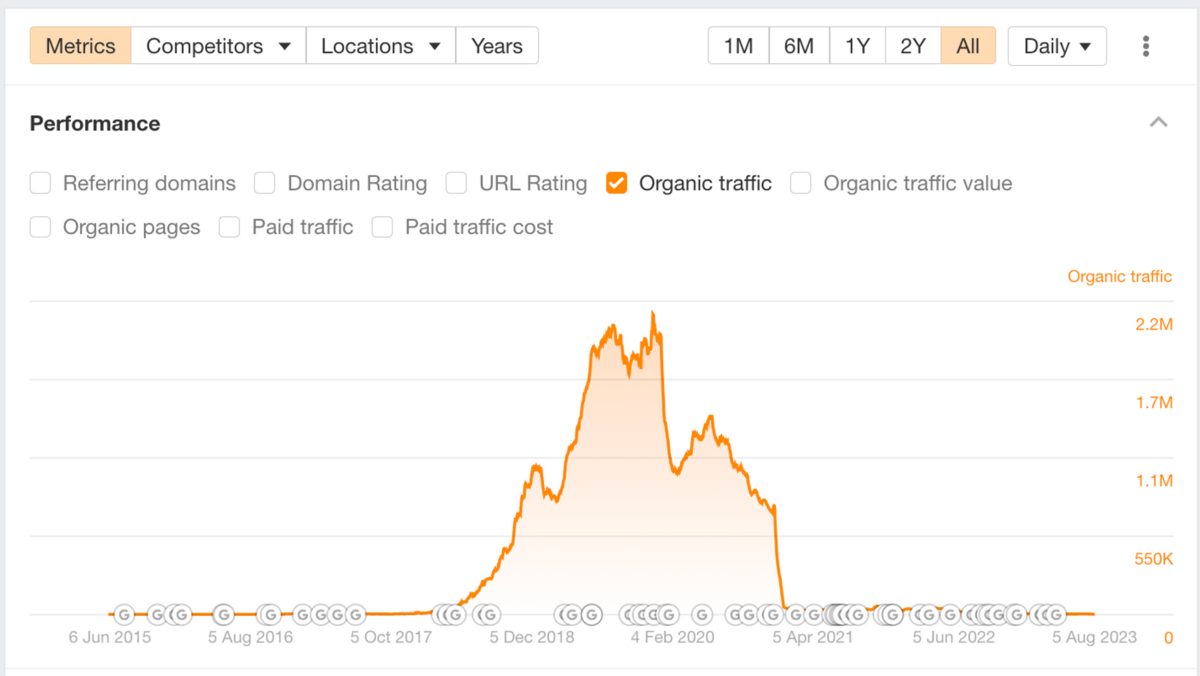
This site made huge gains from early 2018 through late 2019, but those were all wiped out by April of 2021. Overall, they lost millions of monthly visitors to their product review pages, all of which are monetized with affiliate links.
Possible Scams Erode Creator Trust
Affiliate marketing is a magnet for get-rich-quick programs that target content creators. The glitzy promotional campaigns often associated with these schemes can make them feel cheap and scammy.
Some of the programs really are nothing but scams, while others are just gimmicky repackaging of old ideas. But all of them can make affiliate marketing as a whole seem illegitimate, eroding trust in the industry.
It was a really bad look, for example, when SteathGenie got shut down by the FBI. This illegal spy app promised huge commissions and high-intent keywords that (almost) lured in successful affiliate marketers – including us!

To make matters worse, people often mistake affiliate marketing for multi-level marketing, or MLM. But, while the two share a few basic aspects in common, they’re worlds apart when it comes to legitimacy in generating income.
AI Is Changing the Affiliate Marketing Industry
Since the release of ChatGPT at the end of 2022, the AI explosion has made affiliate marketing easier in several ways:
- Faster and cheaper content production
- Quicker and more thorough research
- Help with content ideas
But AI also introduces new challenges for affiliate marketers. Chief among those is increased competition because now anyone can easily scale content production.
Our recent deep dive into AI statistics, for example, shows that 85.1% of marketers now use AI to write content. Current AI tools still have problems with quality and accuracy, but that problem is largely solved by providing proper context.
AI also presents a threat to traffic, as search engines like Google and Bing incorporate AI-generated answers into the SERPs.
Reasons Why Affiliate Marketing Isn’t Dead
After that bleak list of reasons explaining why affiliate marketing is dead, you might have your own doubts.
However, affiliate marketing is currently alive and well, and there are plenty of compelling reasons starting an affiliate marketing business still makes sense today.
Technological Barriers to Entry for Affiliate Marketing Are Lower
The first good news for creators is that the technological barriers to entry are lower than ever.
For instance, competent market research tools are much more widely available now than they were a few years ago. Software like Ahrefs and Semrush are very powerful and user-friendly. They also provide detailed data that wasn’t available even just a few years ago.
You can use Ahrefs’ free keyword generator, for example, to quickly search find volume and competitiveness for whatever term you’re interested in:
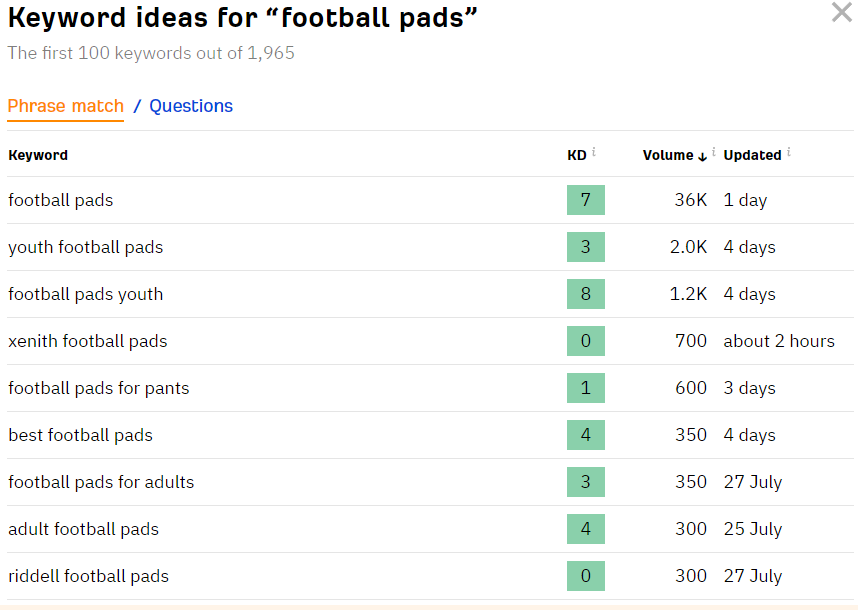
Likewise, WordPress and other web publishing tools have become much easier to use. Most web hosts now have a 1-click WordPress install process, and even newcomers can set up a complete site in just a few hours.
The drawback is that these advancements have dramatically increased competition in affiliate marketing. With technology no longer a barrier to entry, pretty much anyone with a computer can dive in.
The new challenge in today’s competitive world is to make your content stand out. If you want to build a successful blog or website that generates substantial revenue, your content needs to be unique, high-quality, and optimized for SEO.
Affiliate Marketing Spending is Growing
Even with all the challenges you might face in becoming a successful affiliate marketer today, there is plenty of evidence to suggest that it’s still a popular and viable way to make passive income online.
For instance, global affiliate marketing spend topped $12 billion in 2022, according to Influencer Marketing Hub. They expect that number to reach more than $14 billion in 2023. And in 2024, it will hit $15.7 billion.
The Google search trend for “affiliate marketing” over the last five years is pretty clear about its growing popularity, too:

Affiliates Are Still Making Money
It’s one thing to have an interest in affiliate marketing, but it’s something else entirely to become a successful affiliate marketer. Statistics suggest that plenty of content creators manage to do just that, though.
Our affiliate marketing survey found that the average affiliate marketer earns over $8,000. And the top affiliate marketers are earning over $500,000 per month.
A great example of an affiliate marketer who found incredible success is Shane Dukta, who enrolled in our Authority Site System and Authority Hacker Pro courses back in 2018.
He ended up growing his site’s income from about $1,000 per month to $5,000 per month through that summer. By early 2019, he was up to a whopping $50,000 per month.
Shane eventually sold that first site for a 7-figure payday.
However, I want to caution that this kind of success isn’t easy to get, nor is it guaranteed. Shane himself cautions that it took him about a year to reach $1000 per month, which is fairly typical for amateur affiliate marketers just starting out. That’s not meant to be discouraging, though.
Non-Amazon Affiliate Networks Are Growing In Popularity
There’s no doubt that Amazon is less popular among affiliate marketers today than it was in years past. BuiltWith shows a dramatic drop in usage since 2019:
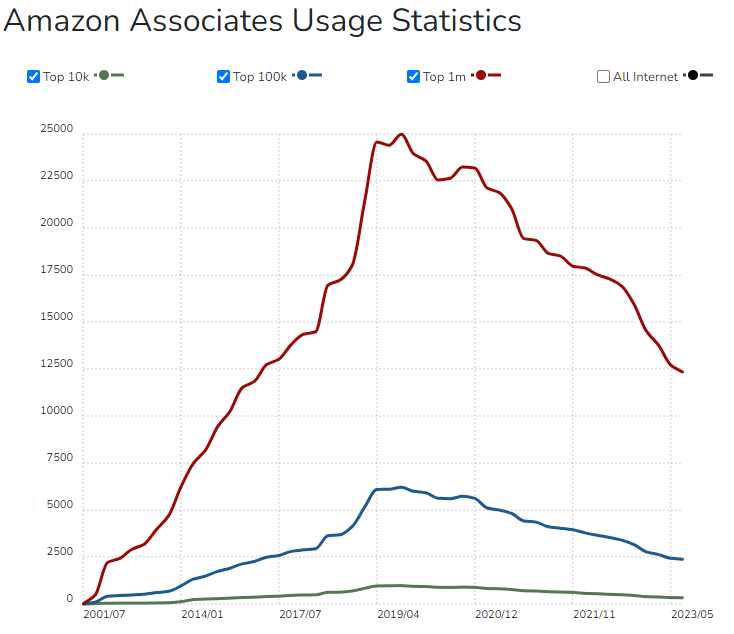
At the same time, affiliate networks like AWIN and ShareASale have seen dramatic upticks in usage. This may be an indication that affiliate marketers are “maturing” and moving from Amazon to better programs.
Considering our affiliate marketing survey found a positive correlation between affiliate revenue and number of affiliate programs, this is a great sign for the longevity of affiliate marketing.
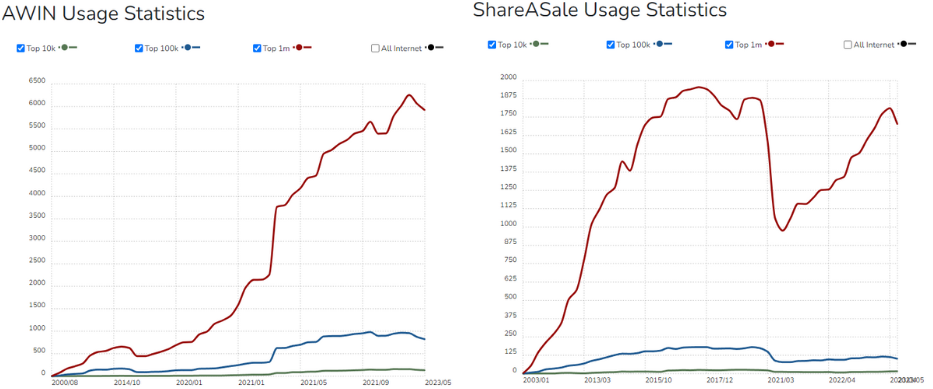
Also, even though Amazon usage is trending downward, there are still plenty of successful Amazon affiliates. In fact, it’s still the most popular affiliate program by a large margin.
There are several reasons for this.
For starters, Amazon sells products in just about every niche you can imagine. That makes its affiliate program a potential revenue source for most blogs. And marketers earn commissions on anything readers buy on Amazon after clicking an affiliate link for the 24-hour lifetime of the cookie, not just the linked item.
Finally, consumers trust Amazon and spend huge amounts of money on the platform. According to a 2021 New York Times report, Amazon topped $610 per person in consumer spending during the previous 12 months. That pushed them past Walmart, with its combined online and brick-and-mortar sales.
Even with dwindling commission rates, that amount of spending has the potential for big affiliate returns.
See our step-by-step guide on How to Become an Amazon Affiliate to get started with this consumer powerhouse. You can also check out our rundown of How to Make Money with Amazon for proven tips on making the most of your Amazon marketing efforts.
Small Publishers Can Still Compete in Many Niches
Even with all the challenges, small publishers can still compete in many niches that offer solid affiliate programs.
Plenty of smaller niches are filled with low competition keywords that have buyer intent. And even if you’re in a competitive niche, you can still find wins by focusing on a narrow slice of that niche, as big publishers often don’t go after smaller keywords.
A good example of a small publisher win is The Daily Dog – a website with a DR of just 1.3 according to Ahrefs’ Website Authority Checker:

But even with a relatively weak backlink profile and low Domain Rating, The Daily Dog ranks well for several lucrative keywords. In fact, they outrank Amazon for “zesty paws mobility bites review”:

To find a niche compatible with your interests and resources 👉 check out our list of 140+ Best Niches for Affiliate Marketing.
You can also check out our article about finding easy affiliate keywords to get a head start on identifying profitable keywords for your own site.
AI Gives and Takes from Affiliate Marketers
When it comes to the future of affiliate marketing, AI is a double-edged sword.
On one hand, some end users are already turning to AI instead of search engines in some cases to find the information they’re looking for online. And Google itself is leaning into AI with their new Search Generated Experience (SGE).
As you can see from our detailed video on the topic, SGE has the potential to decrease click-through rates for even top-ranking sites:
But AI also makes content production much faster and easier, which allows creators to scale quickly. For example, Koray Tuğberk GÜBÜR shared a case study on X (formerly Twitter) showing the sort of dramatic results AI can deliver. A single site was able to publish 300,000 new posts and draw 30 million visits in the course of just 4 months.
Before AI, those sorts of results would have been impossible without spending a fortune on content and advertising.
Given these two competing AI forces, it seems possible that affiliate marketing will settle into a sort of middle ground. Creators will be able to publish much more content than ever, but posts may generate less traffic.
Consumer interest may also help dampen some of the traffic lost to AI. After all, shoppers will always value advice from a trusted independent third party when buying a product. Since that’s where affiliate sites shine, the long-term outlook seems solid.
Conclusion
Despite the negative sentiments about affiliate marketing, it is clearly not dead. The overwhelming majority of industry insiders feel positively about the future, and market forecasters reflect their view.
However, affiliate marketing strategies will need to change to adapt to the AI era we’re now living in.
My recommendation? Build a brand that your audience trusts and respects. “Commodity” websites that focus on nothing more than answering SEO questions for cold traffic will struggle as AI continues to be integrated into the SERPs.
Become a go-to source in your industry, and you’ll likely thrive.
To learn how to build an affiliate marketing business that dominates in this new AI era, check out our free authority site training.
It was created with the future of affiliate marketing in mind, and includes 7 secret tactics that make new affiliate marketing websites 83% more successful.
